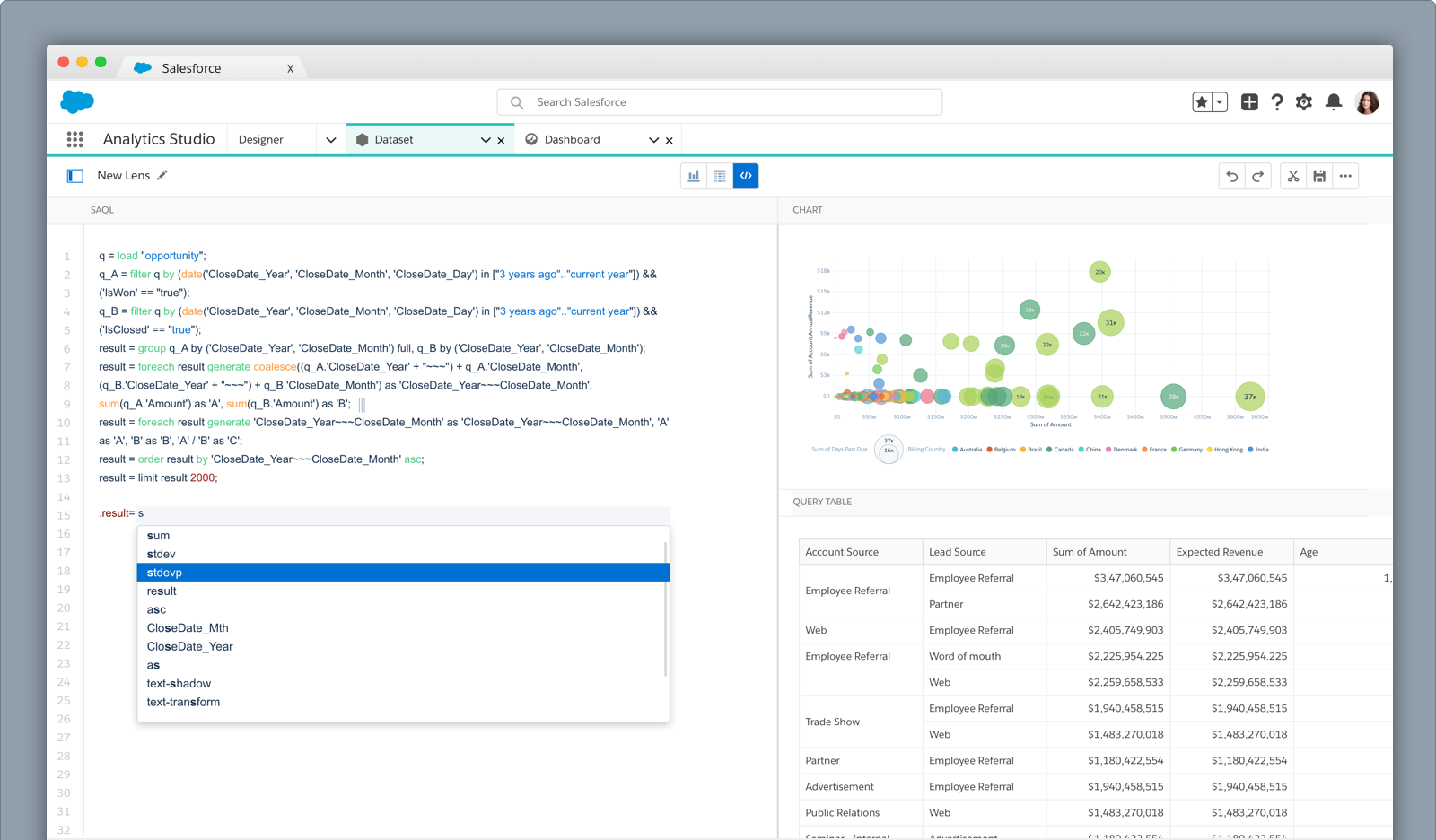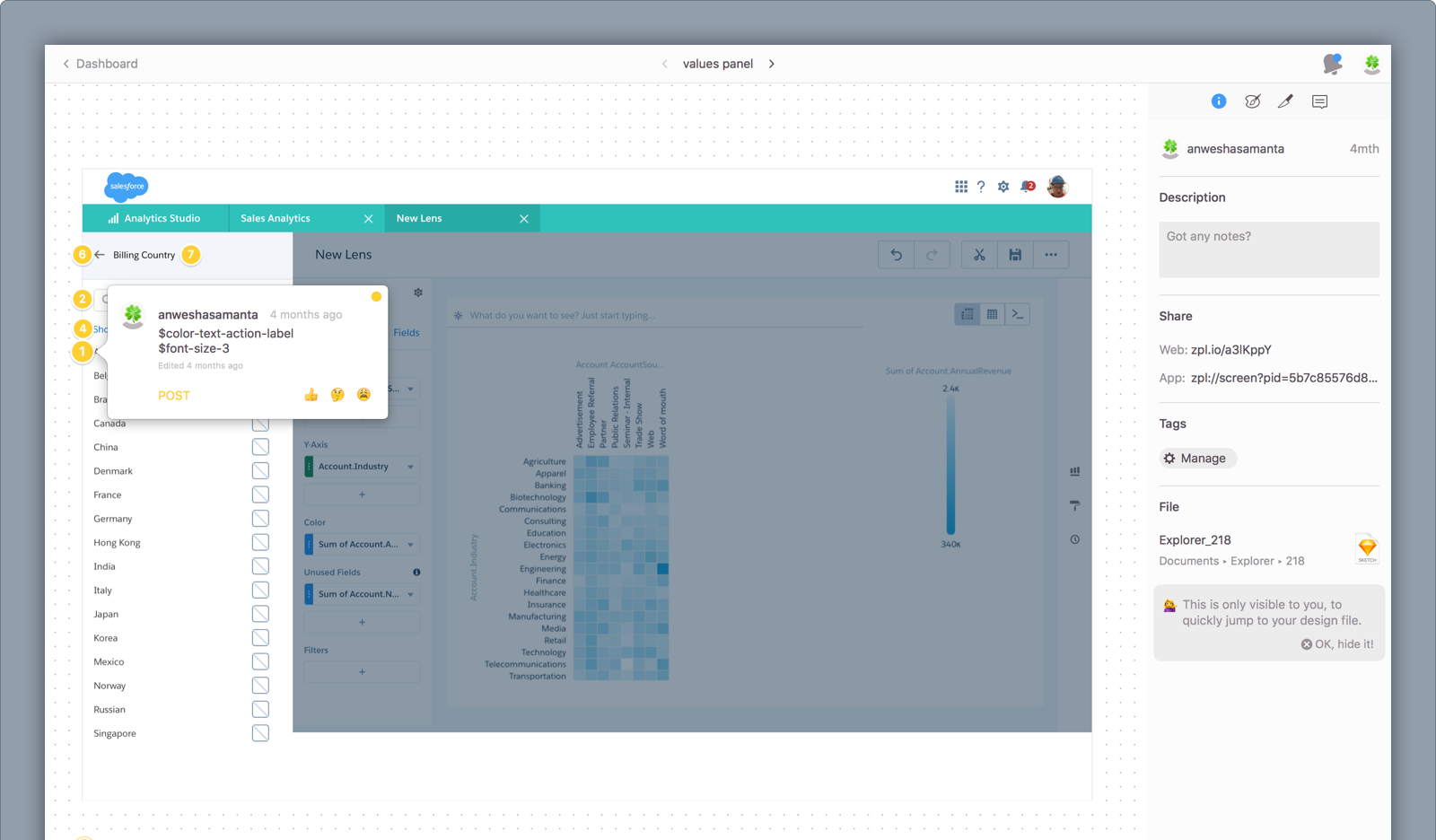History - A tool built by engineers
Explorer is the data exploration tool in Salesforce Einstein Analytics Platform. User can pick datasets and find relationships, correlations, comparison, distribution and more in their data and save and share those insights.
Explorer is a complicated tool. This tool was designed and build by engineers. I started working on explorer in November 2017. The team had 5 engineers and a product manager. My job was to make explorer easier for user in addition to adding a lot of advanced features that our tool lacked.
Identifying persona
I started by chatting with user researchers and interviewing existing users and solution engineers, to figure out who uses explorer and how they use it. We found that explorer has two types of target audience
- Builder - analyst who explores to data to build dashboards)
- Consumer - business user like an exec or manager, who is looking at a dashboard and wants to explore a chart to find more isights
Understanding current Information Architecture
To have a deep understanding of the current platform and to familiarize myself with the workflows, I started using the tool to build vizualizations. I also worked with the product manager and developers to come up with an information architecture of the existing tool. By identifying the current IA and user research, we were able to identify pain points and functionalities/features that our platform lacks.
Longer-term, big-picture design thinking
This was a great opportunityfor me to help kickstart the conversation on what the future of Explorer would looked like, and it started with visioning. So next step was to come up with an ideal experience for explorer. I collaborated with my product manager and lead dev to come up with an end to end flow for explorer. It was an iterative process of coming up with a lo-fidelity flow and then iterating on it based on feedback from stakeholders and users. This user-first exploration with a future-focused lens enabled the team to see the vision for explorer.
Presenting to Execs and Stakeholders
The visioning was presented across the cloud and helped align teams, focus our debates. We walked the leadership team through the pain points, showed them what other tools are doing and how we can improve. Here are some screenshots of the future looking prototype where user can visualize their data in a chart mode, table mode or in a query mode.
One of the main features that we strongly felt about was tables. As a data exploration tool, we realized how our tables were not robust enough for customers who were used to doing calculations in tools such as excel.
From these stakeholder/leadership meetings, we also got them to give us additional headcount to make these future looking explorations a reality in the next one year
Scoping for release planning
We gathered user feedback on the new designs and iterated on them. Within months we were building and executing on a new strategy. We worked together as a team to scope features by release ranging from the most practical and realistic to implement, to progressively more future-forward. After picking up the highest priority item for each reelase, we also added some quick wins every release which were based on low cost (on engineering) and high value (for customers).
Working with engineers
Having focused on the longer-term vision, I then switched gears and looked into shorter-term tactical steps to build toward the vision. We used Zeplin to collaborate on design specs.
Explorer's Future
For the past year, our team has been focused on the builder persona. Moving forward, we'd like to dig deeper into the consumer persona to figure put how exploration is different or similar for them. We would like to add more functionalities like NLQ and AI insights to make data exploration a more guided and insightful process.







